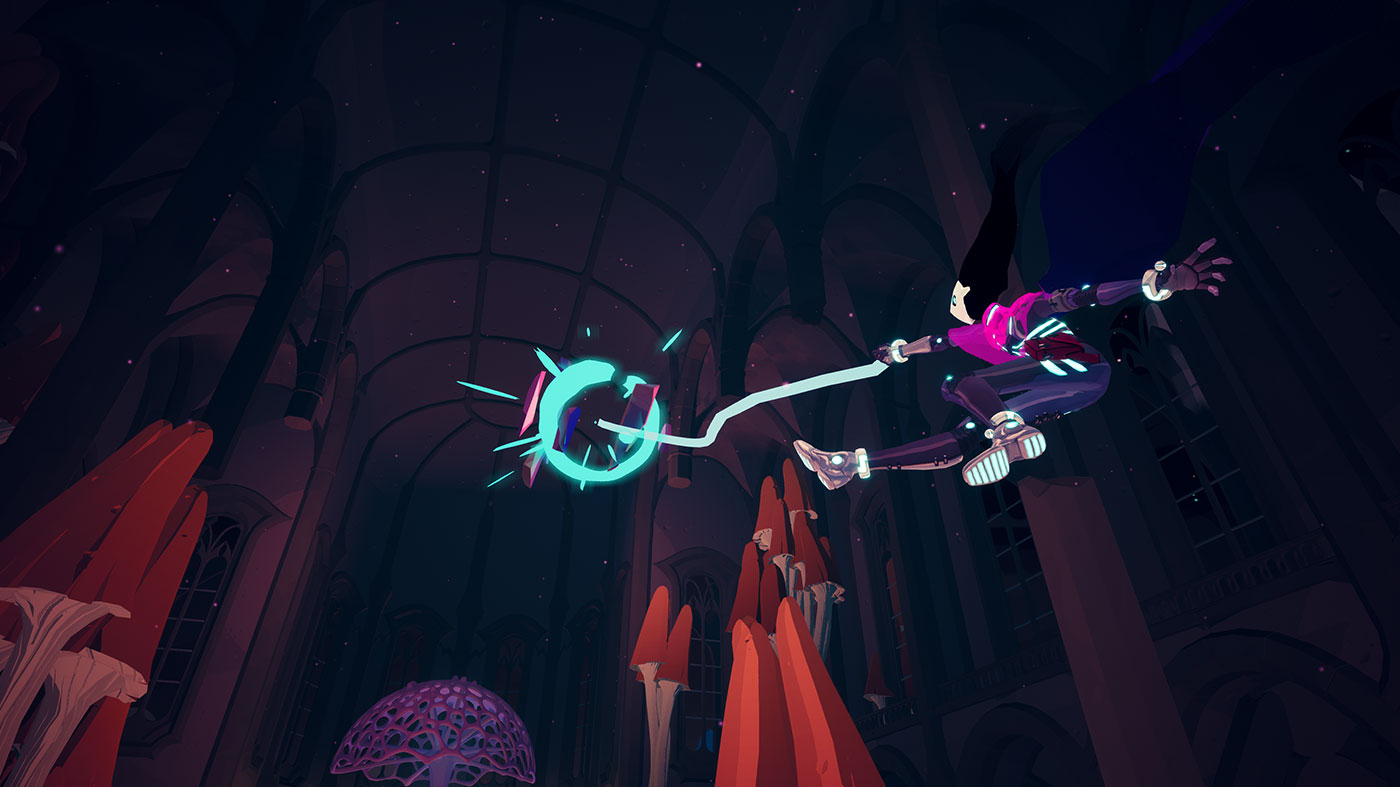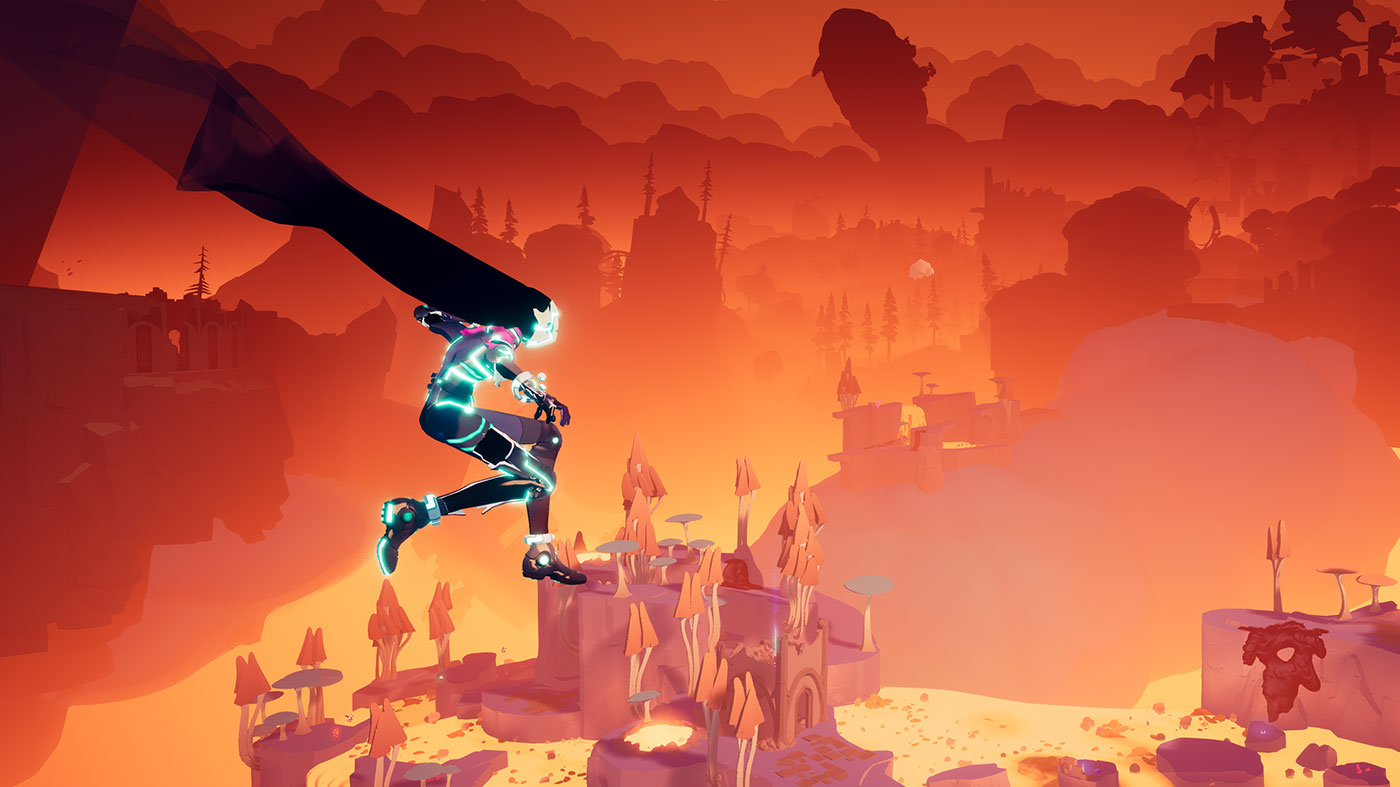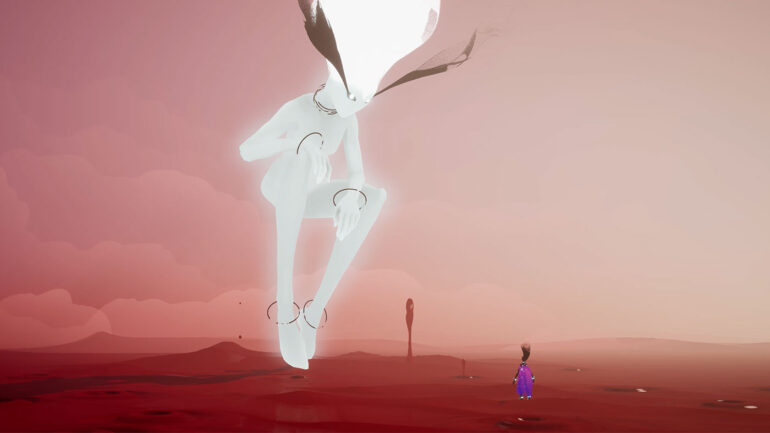Hyper Light Drifter stands out as one of my favourite games from the last generation thanks to a tremendous feat in world-building paired with its soul-crushing Soulslike combat. Heart Machine’s sophomore release Solar Ash might be set within the same universe, but the two are poles apart. Solar Ash is a far more serene, explorative exercise and places far less emphasis on being a dealer of death in a world where it’s still very present.
Far from the Drifter’s world, Rei’s is being threatened by an irresistible black hole known as the Ultravoid. It’s her job as a Voidrunner to venture beyond the event horizon to activate an experimental technological escape rope known as the Starseed to render the force inert and save her planet from its terrible fate. Where Hyper Light Drifter tucked a lot of its narrative into the far corners of its world, Solar Ash tells a more straightforward story that similarly tells a personal, touching story about finding hope in a hopeless place and, especially once the story executes its major turn, it pays off all of the mystery it spends its formative hours setting up.

In what feels like an homage to Jet Set Radio, Rei spends much of the game figure-skating on solar ash clouds. It’s a great means of getting around the game’s desolate landscape and is really the central pillar of the moment-to-moment gameplay. Rei is also armed for melee combat but, aside from a short-range swing and a grappling hook to bridge gaps, her move set is limited so it feels more like a means of self-defense than a proficiency of hers. Her cloud-dancing is as graceful as you’d imagine, and combined with her percussive combat, there’s a real rhythm to the game’s core loop. In addition to the general fodder, each of the world’s fragments has a colossal guardian of its own, known as Remnants. Though it’s a fools’ errand to wake them by purging the map’s far reaches of the corrupting ooze, the subsequent boss battles are balletic and, thanks to their sheer scale, riff off of Shadow of the Colossus in a lot of ways.
Gracefully gliding across these colossi and chaining all of the hit markers together before the monster’s skin superheats, an arm wrestle of speed and precision, serves as the spectacle of each biome. Though each death blow feels regrettable in the game’s context, the journey demands it and I couldn’t help but ride the tension of every battle knowing full well Solar Ash was building to something special. It takes all of Rei’s tools—mobility and brutality combined—to topple the beasts. Unlike Hyper Light Drifter, there was no real need to learn patterns and apply knowledge to each repeat effort, it’s a game that’s very much about living in its moments.

The inner workings of the Ultravoid are split up into six fragments, all ripe for exploration. While Rei’s skating remains constant throughout, I do applaud the effortless introduction of new elements that emerge the further we plunge into the void, whether they’re complementary like rails for Rei to grind on or hazardous like the expansive pools of acid that attempt to derail her suicide mission. Hyper Light Drifter didn’t hold back when it came to challenging players and it feels like Solar Ash got a bit lost in this regard as it pursued some measure of accessibility. It’s tricky in points and, through predetermined story beats, the game does deduct hit points from Rei, but when there’s no real consequence to dying it never feels like it matters a whole lot.
Though the immense gravity of the Ultravoid threatens to tear Rei’s planet to pieces, its presence is felt in-game as parts of the world are held in stasis. I remember being floored as I entered Mirrorsea, a collapsed coastal civilisation where its sea has formed a towering pillar that acts as a bridge between areas. Not only is it a striking image, but skating it in defiance of what we expect from physics while looking down on the world beneath made for one of the game’s most memorable moments.

Solar Ash doesn’t get bogged down as much as I felt Hyper Light Drifter did at times in terms of collecting trinkets. It could be because the narrative is presented more plainly, but it felt as though everything Rei searched for—her fallen Voidrunners’ suits and data logs—tied directly into her plight. Each of the game’s regions has a small story thread that, once uncovered fully, builds out the game’s world even more and creates a great sense of place. Most of it isn’t more than a stone’s throw from the beaten path, given the world isn’t overwhelmingly big, so it wouldn’t be inconvenient to seek out these secrets and pad out the game’s handful of hours.
Solar Ash, being set in the same universe as Hyper Light Drifter, feels as though it nails the right amount of connectivity with its kin project. If there’s a connective tissue that binds the stories together then it was lost on me. But there’s a familiarity that stems from the game’s iconography and colour palette that is unmistakable. It’s the same but different, it’s the explosion of colour, style, and grand design that places it so confidently, without any other hint of association, in the same time and place of Hyper Light Drifter. It’s a beautiful game and it’s helped along by a score that, once again, nails the ethereal mood of the world. And while Disasterpeace didn’t handle the score, his fingerprints are all over it, and more specifically, his work on the emergent audio is next level.

Despite being a deeply personal game for the people who made it, I feel like its ideas and concepts are so accessible that you’re bound to take something out of the experience. There’s a particular line from the game’s climax that has been doing the rounds in my mind since I rolled the credits and Solar Ash’s impact on me is profound. It’s an achingly beautiful piece of art that I’ll remember for some time.




